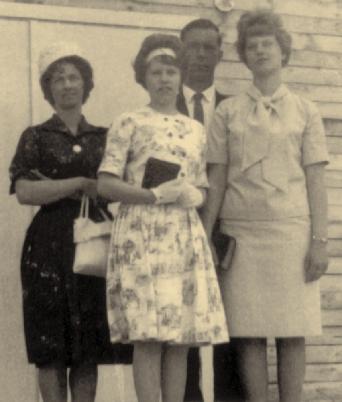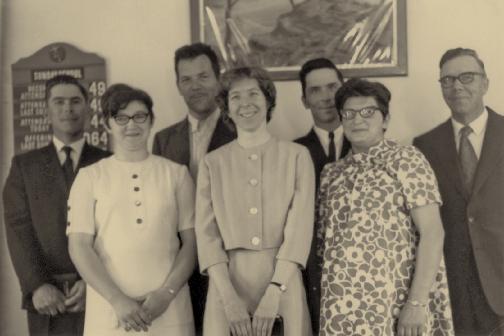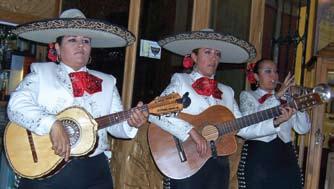
8 minute read
The historical trail of the EMC membership idea
this biblical truth in any future forms church belonging may take, but it is also important to ask, “Does our existing form of membership adequately maintain this biblical model of what it means to be the church?”
Many questions remain about how we express belonging in the church, but some matters are clear. Christ is the centre and since we all belong to Him, we, by that very experience belong to each other. We are all indwelt by the same Spirit and therefore are one.
Advertisement
The life of the Church is a life lived in a covenant relationship with one another and is expressed by all the words attached to the phrase “one another” in Scripture. These are the foundations which cannot be compromised as we consider how to live in covenant community.
It is easy to succumb to cultural reluctance to be subject to others. Past experiences of abuse of power which the church has exercised give reason for reluctance. Has this caused us to back off from belonging and all it means?
Can we find new forms which retain the centre of the biblical model? What can the Church offer to a fragmented and isolated world because of the concept of covenant community?
How do we communicate this positively and invitingly to those in and outside of the Church?
May the vision of the body of Christ, which in eternity will be one, guide us to meaningfully connect to Christ and to one another!
George Toews is senior pastor of Rosenort EMC. This article was adapted by him from his presentation at the national EMC ministerial meeting on Nov. 27, 2009, at Pleasant Valley EMC. His longer presentation is available from the EMC national office.
by Dr. Arden Thiessen
As a pastor I promoted the idea that church membership is good. I often invited new people who joined us for worship to commit themselves to us by becoming members in a formal, official way. VE S The common friendly rebuff was, “What’s the point? We feel we belong already. And what’s : E MC AR CHI the big idea about membership P HOTO anyway?” In response to such vaguely evasive thinking I explore here the origins of our church membership idea.
It is common to begin our historical thinking with the developments of the sixteenth century in Europe. We ask, “How did those radical evangelical Mafeking, 1964: Betty Geary, Twylla Dueck, Pastor Dave and Lydia Dueck. believers of the sixteenth century, who condemned the Catholic mother church in Rome as totally unbiblical and turned their backs on the venerable state church concept, arrive at the idea of an apolitical free church?”
I find nothing to suggest that they had a vision, a plan, or a model for such a new system. However, in contrast to the corruptions of the state church, which they constantly criticized and decried, they were committed to living the life they saw depicted in the New Testament.
They wanted to emulate the love, the fellowship, the purity, the loyalty to Christ, and the discipline that they saw pictured there. About this they preached and to this they witnessed. They baptized each other as true followers of Jesus, they loved and supported each other, and they disciplined those who drifted away. It didn’t take long before their movement began to look like a new church. Within a few decades they were labelled as such by their critics.
Early writings
I find no evidence, after browsing Balthasar Hubmaier, Peter Riedemann, Dirk Philips, and Menno Simons, to suggest (continued p. 12)
that they understood our modern concept of church membership.
Their early confessions all have statements on the nature of the church of Jesus Christ, but not on the local congregation and its membership. They do, however, speak of new believers being baptized into the fellowship, and they commonly emphasize that mutual care means they discipline those who stray away and deny the faith.
Dirk Philips writes beautifully about the importance of joining “the congregation of God.”
However, with this he means, not a list of people, but a fellowship of like-minded, sincere followers of
Jesus Christ (Writings, 351).
Menno Simons frequently describes the true church in contrast to the corrupt church of the world. Here is a good example: “They are the true congregation of Christ who are truly converted, who are born from above of God, who are of a regenerate mind by the operation of the
Holy Spirit through the hearing of the divine
Word, and have become children of God, have entered into obedience to Him, and live unblamably in His holy commandments, and My impression is that those who were baptized My impression is that those who were baptized upon the confession of their faith were simply, logically, regarded as members.

He speaks of the church in Neuenhuben, Prussia, where he began his ministry, as consisting of one hundred communicants. He also refers to a certain church member’s meeting (P.M. Friesen, The Mennonite Brotherhood in Russia, 127, 132).
However, when C. Henry Smith reports of the church fraction in Russia, “Reimer, with eighteen others, seceded from the main body and organized a church of their own,” (Smith’s Story of the Mennonites, 275). He is probably counting family heads, not church members.
Harold Bender reports that when the small group, in 1814, elected Klaas Reimer as their elder, they considered themselves to be an organized church (“Kleine Gemeinde,” GAMEO). Eventually, in 1843, the mainline Mennonite church recognized the Kleine Gemeinde as a separate church (P.J.B.
according to His holy will all their days, or from the moment of their call. (Complete Writings, 300). Pelly, 1971: Julian and Valerie Andrusiak, Mervyn and Donna Abrahamson, Walter and Darlene Andrusiak, Pastor C. F. Dueck.
Reimer, The Sesquicentennial Jubilee, 10). upon the confession of their faith were simply, I summarize the process of Mennonite logically, regarded as members of the new fellowchurch development as follows: The radicals of ships that were developing. Discipline dealt with the sixteenth century did not need the concept the baptized, that is, those who had entered their of formal church membership. Those who were fellowship. rebaptized as believers were in the fellowship. It
I find no evidence that exclusion meant the was within this informal fellowship of the rebapremoval of a name from a list or roster. The idea tized that they practiced their concern for purity of just mechanically taking a name off a list would and sanctification. probably have seemed like a meaningless gesture to Those outside their fellowships also recognized them. the development of a distinct people in their midst and labelled them, derisively, the Anabaptists. The Russia fierce and violent persecution further established
I move ahead to the Mennonite church in Russia the baptizers’ sense of self-identity and confirmed at the beginning of the nineteenth century. Klaas their sense of fellowship; they were the fellowship Reimer, the leader of the seceding Kleine Gemeinde of the persecuted and ostracized. group later renamed the Evangelical Mennonite With the Mennonite exodus to the east, Conference, writes as if he understands the concept beginning around 1550, their particular identity of a distinct church membership. was further confirmed because the authorities in
Prussia regarded them as foreigners, labelled them as such, and subjected them to various forms of discriminatory legislation, such as special taxes and restrictions on where they could settle.
Consequently, the Mennonite people became, on a smaller scale, that from which they had earlier so passionately separated themselves, a state church. Church and community were one.
It was only with the withdrawal of the Klaas
Reimer group in 1812 and then the Mennonite
Brethren separation in 1860 that specific church membership lists became essential (I’m not saying they didn’t have them earlier, just that they were not important enough to be mentioned in their records). But once they were a mixed community they found it essential to identify who belonged where. In view of the ambiguous history of the church membership idea and the brevity of the Constitution statements, it is not surprising that questions have surrounded the issue.
Canada
In the early years of Kleine Gemeinde/ Evangelical Mennonite life in Canada it was the common practice to identify baptism with membership in the church. Those who were baptized were immediately received as members.
The first Constitution of the Evangelical Mennonite Conference, published in 1960, stated clearly that membership in the local churches required baptism upon the confession of faith, but did not discuss whether baptism necessarily meant membership (29).
The revision of 1979 says, “A person becomes a member of a local congregation by believer’s baptism and acceptance into fellowship” (40). The latest version, that of 1994, simply says, “A person identifies with the local congregation by believer’s baptism” (20).
In view of the ambiguous history of the church membership idea and the brevity of the Constitution statements, it is not surprising that questions have surrounded the issue. It was addressed at three EMC Ministerial meetings, in 1973, 1987, and 2004.
However, questions such as the following are still being asked:
How valid is the tradition that baptism means
MEMBERSHIP IN THE LOCAL CONGREGATION 1. Conditions of Membership
To qualify for membership in the local church, a person a) M ust have a personal faith in the Lord Jesus
Christ. b) M ust have a satisfactory witness of being born again. c) M ust be baptized on confession of faith. – from the EMC Constitution, 1960, p. 29 and 1973, p. 33
1.
MEMBERSHIP IN THE LOCAL CHURCH Conditions of Membership
To qualify for membership in the local church, a person must a) have a personal faith commitment to the Lord
Jesus Christ; b) have a witness of being a new creation in
Christ; c) be in agreement with the Statement of Faith; d) be baptized on confession of faith. – from the EMC Constitution, 1994 (2007 Revision), p. 14
entry into formal church membership?
Why do believers have to be baptized before they can be members of the church?
How can church membership be a more meaningful reality than it currently seems to be for many?
How can we deal graciously and helpfully with all those “members” who have dropped out, switched, or moved away?
Why can’t believers who have received infant baptism elsewhere be received as members without rebaptism, especially if they have many years of Christian living and Christian service behind them?
Let the discussions and the pilgrimage continue!
Dr. Arden Thiessen is an educator within our conference. This article is adapted from his presentation at the national EMC ministerial gathering at Pleasant Valley EMC on Nov. 27, 2009.








